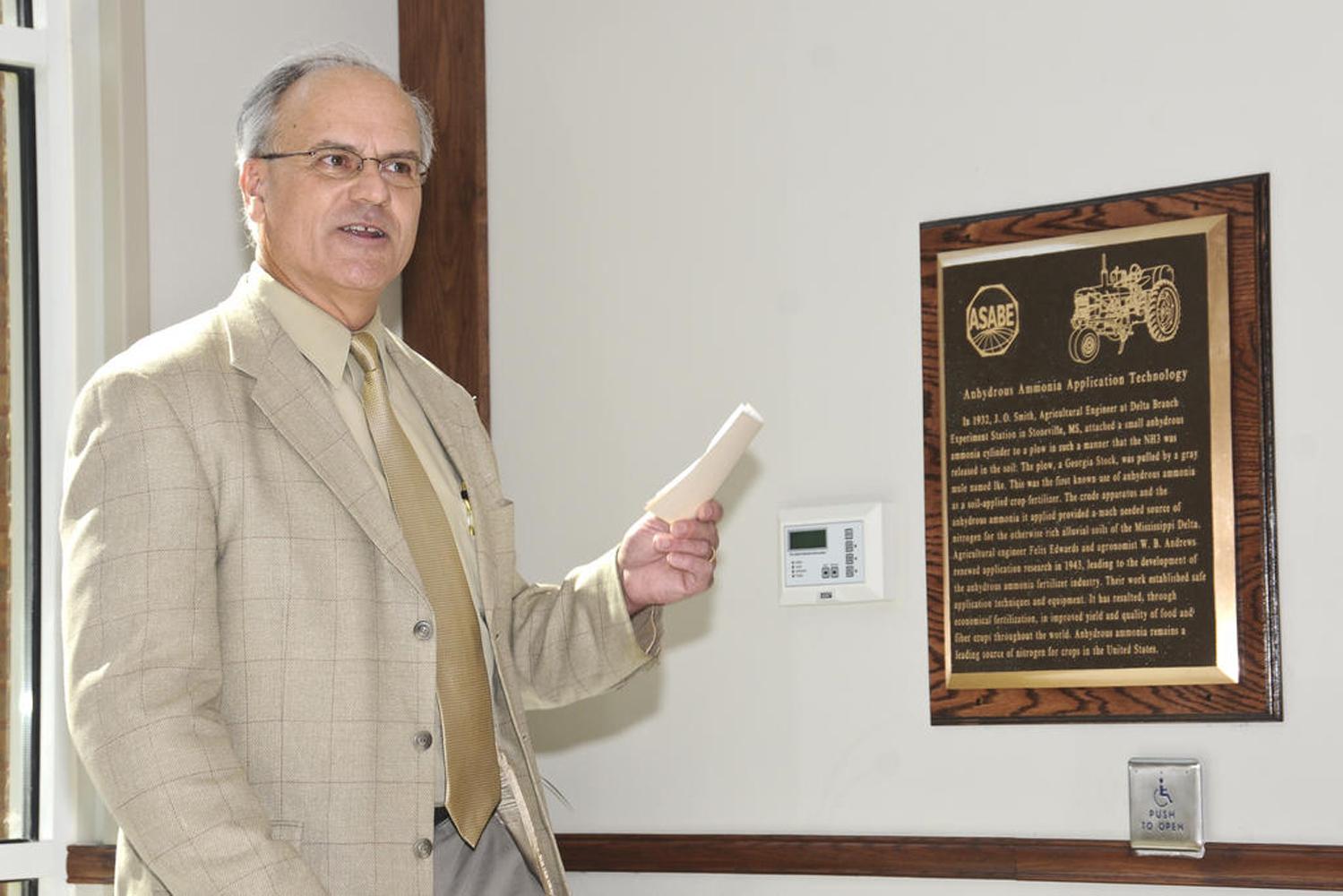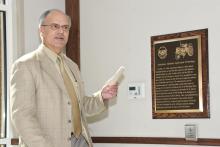Information Possibly Outdated
The information presented on this page was originally released on June 2, 2011. It may not be outdated, but please search our site for more current information. If you plan to quote or reference this information in a publication, please check with the Extension specialist or author before proceeding.
New plaques mark MSU's historic role
MISSISSIPPI STATE -- Researchers and inventors often succeed with efforts others consider impossible, but one “crazy” idea in the 1930s and 1940s changed the face of agriculture and contributed to the formation of Mississippi’s first Fortune 500 company.
In April, the American Society of Agricultural and Biological Engineers unveiled a historic landmark plaque in Mississippi State University’s Agricultural and Biological Engineering Building. An identical plaque was unveiled May 27 at MSU’s Delta Research and Extension Center in Stoneville.
The plaques honor the achievements of MSU faculty members J.O. Smith, Felix Edwards and W.B. Andrews, all deceased. The three were instrumental in the development of anhydrous ammonia application technology, which gave birth to Mississippi Chemical Corp.
“When they wanted to put a gas in the soil for fertilizer, people thought they were crazy,” said Jac Varco, MSU professor in plant and soil sciences. “But almost 80 years later, anhydrous ammonia is still in use as a fertilizer.”
The plaques are the 56th markers placed around the country by the engineering society. Other markers commemorate milestones and inventions, such as the McCormick reaper, the John Deere plow, the New Holland hay baler and Eli Whitney’s cotton gin. Mississippi hosts another marker for agricultural aviation in Jackson.
Herb Willcutt, recently retired agricultural engineer with MSU’s Extension Service, said MSU faculty members began the long and detailed recognition application process three years ago.
“We felt like the efforts by these two agricultural engineers (and one agronomist) resulted in benefits to society and to the profession,” Willcutt said. “Their research was not just about finding a cheap source of nitrogen fertilizer for crops, but also about finding safe ways to transport, store and apply the material.”
The plaques commemorate the work begun in 1932 when Smith, an agricultural engineer at the Delta Branch Experiment Station in Stoneville, initiated the research. He attached a small anhydrous ammonia cylinder to a mule-drawn plow to release the material into the soil. This was the first known use of anhydrous ammonia as a soil-applied crop fertilizer. The crude apparatus and the anhydrous ammonia it applied provided a much-needed source of nitrogen for the otherwise rich alluvial soils of the Mississippi Delta.
In 1943, Edwards, an agricultural engineer, and Andrews, an agronomist, renewed application research. Their efforts led to the development of the anhydrous ammonia fertilizer industry, which peaked in the 1960s and continues today.
“Their work established safe application techniques and equipment,” Willcutt said. “It has resulted, through economical fertilization, in improved yield and quality of food and fiber crops throughout the world. Anhydrous ammonia remains a leading source of nitrogen for crops in the United States.”
At http://www.asabe.org/awards/, find a list of historic sites designated by the American Society of Agricultural and Biological Engineers.



